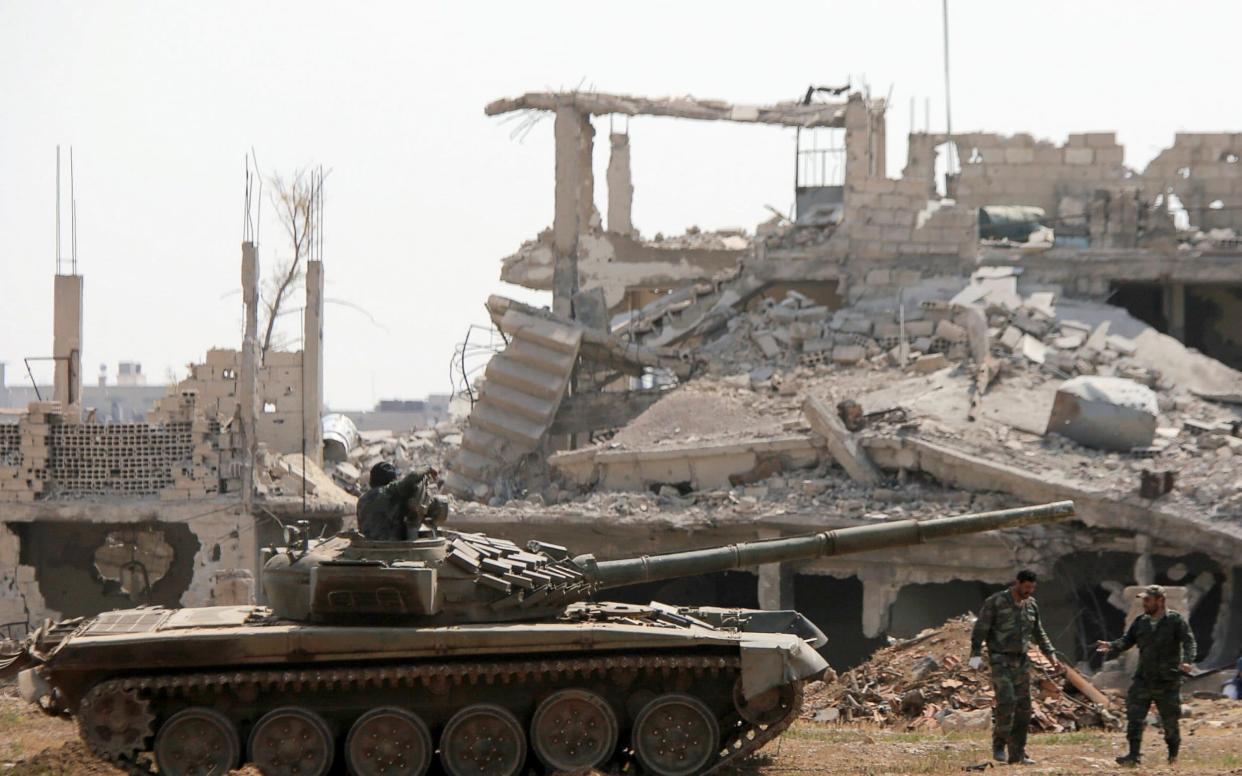Islamic State fighters 'evacuate Damascus enclave' as Bashar Assad moves to reclaim Syrian capital

Islamic State (Isil) fighters on Sunday started evacuating the Yarmouk camp area in southern Damascus, a key step towards the Syrian government retaking total control of the capital.
Fighters and their families left the Zahra area adjacent to the camp, which they had controlled since April 2015, on buses early yesterday morning.
According to activists, six buses, each with seats for 50 people, left the area.
The Syrian Observatory for Human Rights said the buses were headed towards the Syrian Badia, a desolate stretch of desert east of Damascus that extends to the border with Jordan and Iraq.

The Syrian government denied making any sort of deal with militants and said the army was fighting the last of the insurgents. As of yesterday afternoon, anti-government activists also said fighting was ongoing.
Pro-government media described the development in Yarmouk as a surrender – a term it has used throughout the conflict to describe the sort of negotiated withdrawals that follow siege, bombardment and an exit of fighters on government buses.
Syrian government forces, backed by their Russian allies, began their offensive on Yarmouk a month ago.
According to the Observatory, 56 civilians have been killed since the offensive began. A truce was reportedly reached late on Friday or early Saturday, giving the militants 24 hours to leave.
Photographs and videos from inside the camp revealed a scene of spectacular devastation reminiscent of eastern Aleppo after the government’s multi-month assault there.
Yarmouk, in the southern part of the Syrian capital, housed about 160,000 Palestinian refugees before the war began.
In December 2012, anti-government forces including the Free Syrian Army and local Palestinians seized control.
Close to 140,000 people fled during subsequent clashes. According to the UN’s Relief Works Agency (UNRWA), which supports Palestinians, just 18,000 people remained in Yarmouk in July 2013 when government troops choked the camp in a siege.

Isil fighters swept into Yarmouk in April 2015, seizing up to 95 per cent of the camp. Until recently they controlled an area home to around 3,000 people.
The Isil enclave, which straddles the camp and the Zahra and Tadamon districts just adjacent, is part of a larger besieged area with other sections formerly controlled by FSA-affiliated factions and Hay’at Tahrir al-Sham (HTS).
For Syrian president Bashar al-Assad, the ousting of Isil from Yarmouk is a crucial victory on the road to his intention to reclaim “every inch” of Syria from those he loosely terms as “terrorists”.
The capture of Yarmouk would bring the entire capital under Mr Assad’s control for the first time since the conflict began in 2011.
Mr Assad has come under criticism from the opposition and some members of the international community for carrying out a policy of forced displacement with the goal of removing those opposed to his rule.
Events in Yarmouk follow a similar pattern to previous sieges in Ghouta, Homs and Aleppo.
The Syrian government, commanding vastly superior firepower to any of its opponents, maintains that people are not forced to leave but those who stay must accept state control.
Those who have left the scenes of recent battles have typically gone to areas still outside regime control.
The UN says 110,000 people have been evacuated to northwestern Syrian and rebel-held areas north of Aleppo.
The desert area to which Yarmouk’s Isil fighters have been sent is home to US forces, Kurdish groups and Jordanian proxy groups.
Mr Assad last week met Vladimir Putin, the president of Russia, in Sochi. Mr Putin said he expected foreign forces to withdraw from Syria soon as the political process moves forward.
“With the start of a political process in its more active phase, foreign armed forces will be withdrawn from the territory of the Syrian Arab Republic,” Mr. Putin said.

 Yahoo News
Yahoo News 
